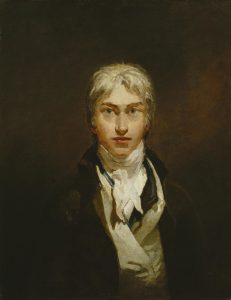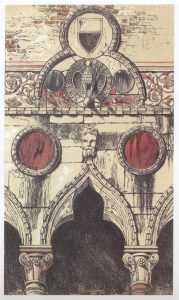Writer, painter, poet, arts critic, traveller, patron. Victorian and Edwardian aesthetics will change forever after his takes and critics on art and architecture. His thoughts about real art (and artists) will be central in Europe’s production.

Image source: https://en.wikipedia.org/wiki/John_Ruskin
About his life
Born in 1819 in London, son of a sherry merchant, he became a student in Oxford (studies end in 1842) where he completed a deep study on Turner which later defined as the incarnation of the ideal artist in his Modern Painters book. Traveled to Italy in 1845 still working on it and starts studying the Venetian School of painting. In 1849 he produced. The Seven Lamps of Architecture supporting the idea that the spiritual virtue of the artist is a condition that can’t be avoided in good art and that imitation of nature is the only true way to create beauty. With his book “The stones of Venice” (1851-1853) he made himself patron and promoter of the Gothic Revival, which later influenced the designs of W. Morris. “Elements of Drawing” in 1857 had a large audience teaching them about the technique of the pure color mark on white background. This had a huge influence on Neo-Impressionism. His studies on gothic architecture later lead him to think about the human morale that created it; after the death of his father, he earned a nice amount of money and used it to endow houses of workers and his own St. George’s Guild from 1871.
His vision changed the aesthetics of Europe forever and many movements in all kinds of arts owe him much-studying material.

Image source:https://commons.wikimedia.org/wiki/John_Ruskin#/media/File:John_Ruskin_self_portrait_1861.jpg
Modern Painters I (1843)
From 1840 to 1842 Ruskin was abroad, mainly in Italy, with his parents. He studied Italian art and began collecting watercolors, including Turner’s. What later became the first volume on Modern Painters, turned out to be a panegyric of Romantic Art. Specifically, Turner’s person and ability, both heavily criticized at the time.
Ruskin’s arguments were in favor of artists like him, as landscape painters were superior to the “old school masters” of the Post Renaissance era. Those masters favored convention, automatism, and not “truth” in nature. The duty of an artist is to scan nature, observe it, not invent it in a composition free of any rule. Modern landscapists have shown superior understanding and appreciation of “truth” in nature.

Image source:https://en.wikipedia.org/wiki/J._M._W._Turner
Art and design criticism
To him, all great art should give an understanding and enjoyment of nature; this is why all inherited artistic styles and conventions should be rejected. Only by deeply looking at nature the artist can truly represent it in the form of Art. William Morris’ design will be very well influenced by this philosophy. The repudiation of a standardized and “cold” industrial product line from any industry is the first step of his tremendous success, and this is thanks to Ruskin. Moreover the creation of Arts and Crafts Movement itself is directly linked to these two great personalities.
In Ruskin’s tome The Stones of Venice about the inseparable nature of aesthetics and morality of his thoughts about art:
“Pagan in its origin, proud and unholy in its revival, paralyzed in its old age… an architecture invented, as it seems, to make plagiarists of its architects, slaves of its workmen, and sybarites of its inhabitants; an architecture in which intellect is idle, invention impossible, but in which all luxury is gratified and all insolence fortified.”
Emphasis on Gothic, rejection of automated styles and standardization, denunciation of Classical tradition: all these were the pillars of Ruskin’s pure view.

Image source: https://www.listal.com/viewimage/5146467
Historic preservation
Ruskin was a strong supporter of the idea that the preservation of ancient buildings was the better way to see the true “maturity” of a work of art, thanks to the marks of age.
In the book The Seven Lamps of Architecture he claims:
“Neither by the public nor by those who have the care of public monuments, is the true meaning of the word restoration understood. It means the most total destruction which a building can suffer: a destruction out of which no remnants can be gathered: a destruction accompanied with false description of the thing destroyed. Do not let us deceive ourselves in this important matter; it is impossible, as impossible as to raise the dead, to restore anything that has ever been great or beautiful in architecture.”

Image source: https://commons.wikimedia.org/wiki/File:John_Ruskin_signature_1880.svg
Info sources: http://victorian-era.org/john-ruskin-biography.html
https://en.wikipedia.org/wiki/J._M._W._Turner#Legacy
https://www.britannica.com/biography/John-Ruskin
https://www.northernarchitecture.us/ancient-monuments/john-ruskins-conservation-principles.html
